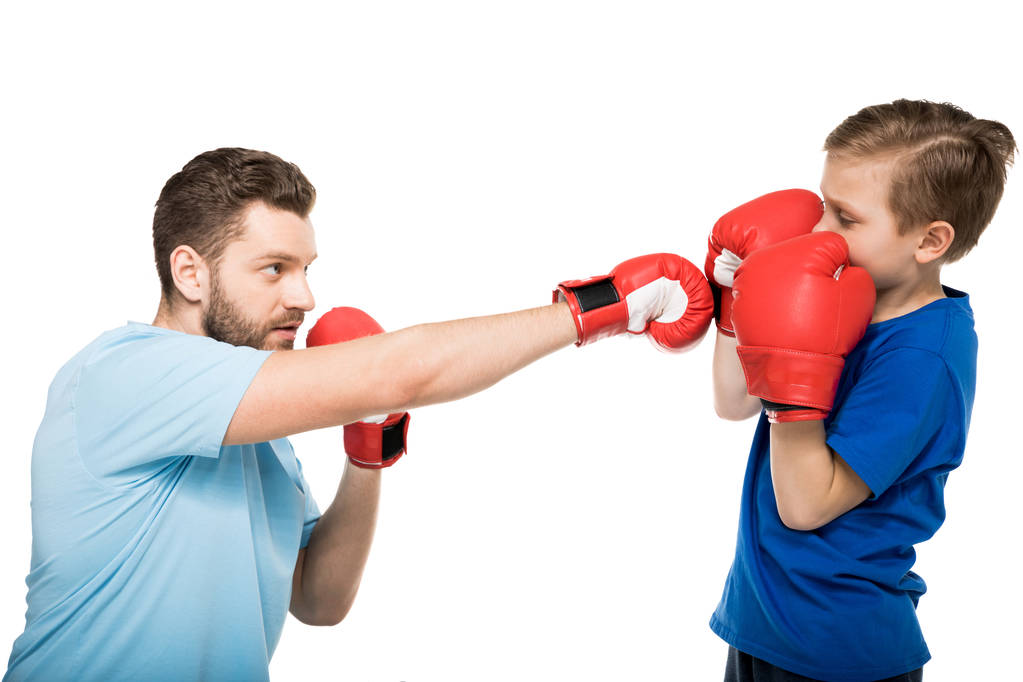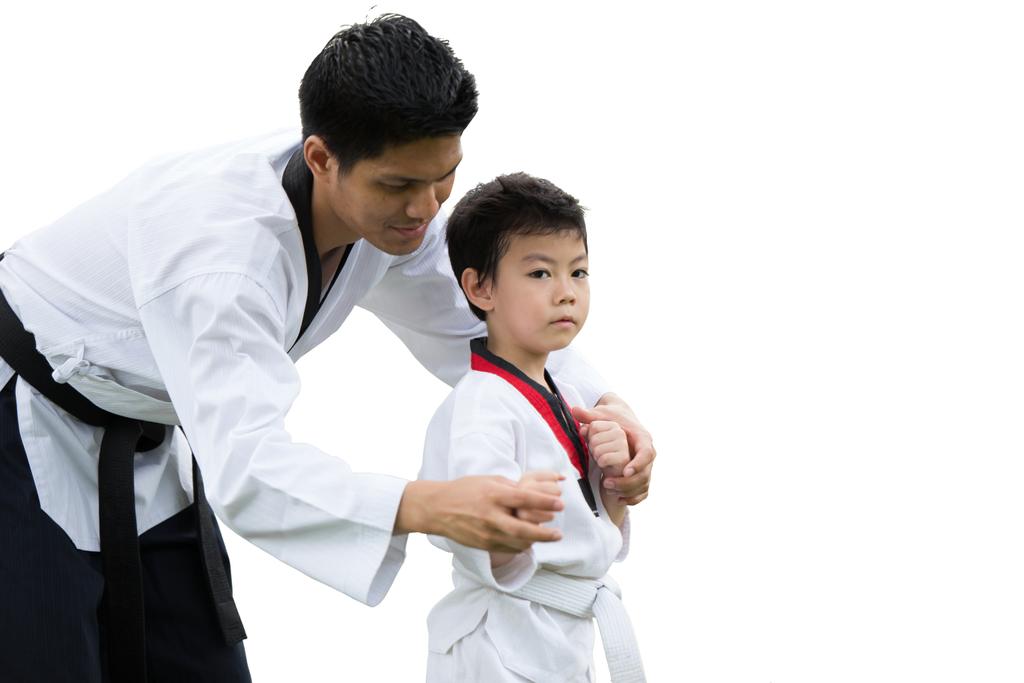Discover effective strategies and techniques for teaching self-defense to 3-4 year old children.
How to Teach Self-Defense to 3-4 Year Old Children
Teaching self-defense to 3-4 year old children may sound like a daunting task, but it’s actually an important skill that can empower them and keep them safe. In this article, we will explore the various aspects of teaching self-defense to toddlers. From understanding the importance of self-defense to incorporating lessons into daily activities, we’ll cover everything you need to know to make this a fun and engaging experience for your little ones.

Understanding the Importance of Self-Defense for Toddlers
Before diving into teaching self-defense techniques to 3-4 year old children, it’s essential to understand the significance of self-defense at this young age. Self-defense not only provides children with basic skills to protect themselves, but it also fosters self-confidence and assertiveness. It instills in them the knowledge that they have the power to keep themselves safe.
Self-defense for toddlers goes beyond physical techniques. It encompasses a holistic approach to their development, encompassing physical, mental, and emotional aspects. By introducing self-defense at an early age, we are equipping children with valuable tools that will benefit them throughout their lives.
The Role of Self-Defense in a Child’s Development
Self-defense plays a crucial role in a child’s overall development. It helps them develop gross motor skills, coordination, and balance. Through various exercises and movements, toddlers learn to control their bodies, improving their physical abilities and overall fitness.
Furthermore, self-defense lessons teach toddlers about personal boundaries, communication, and problem-solving. They learn to recognize and respect their own boundaries, as well as those of others. This understanding lays the foundation for healthy relationships and effective communication skills in the future.
Problem-solving is another vital skill that self-defense instills in toddlers. By presenting them with different scenarios and challenges, children learn to think critically and make quick decisions. This ability to assess situations and respond appropriately builds their confidence and prepares them for various real-life situations.
Safety Concerns and Precautions for Teaching Self-Defense
Of course, safety is always a top priority when it comes to teaching self-defense to young children. It’s important to create a safe and controlled environment where toddlers can learn without fear. This includes ensuring proper supervision, using padded surfaces, and promoting safe practices during practice sessions.
Additionally, instructors should tailor the techniques and exercises to suit the physical capabilities of toddlers. This means avoiding complex movements that may be too challenging or potentially harmful. By focusing on age-appropriate techniques, we can ensure that toddlers can learn and practice self-defense in a safe and effective manner.
Moreover, it’s crucial to emphasize the importance of self-defense as a means of protection rather than aggression. Toddlers should understand that self-defense is about defending themselves and others when necessary, not about initiating violence. By instilling this mindset from the beginning, we can foster a sense of responsibility and empathy in our little ones.
In conclusion, self-defense for toddlers is more than just physical techniques. It’s about empowering children, developing their physical abilities, and teaching them essential life skills. By creating a safe and supportive environment, we can help toddlers build self-confidence, awareness, and the ability to protect themselves. Start your child’s self-defense journey today and watch them grow into confident and resilient individuals.
Basic Self-Defense Techniques Suitable for 3-4 Year Olds
Now that we understand the importance of self-defense for toddlers, let’s explore some basic techniques that are suitable for this age group.
Introducing the Concept of Personal Space
Teaching children about personal space is the first step towards self-defense. Start by explaining to them the concept of personal boundaries and why it’s important to respect them. Encourage them to express their feelings when someone invades their personal space. By understanding personal space, toddlers become more aware of strangers and potential dangers.
One way to introduce the concept of personal space is through interactive games. For example, you can set up a pretend scenario where your child is playing with their favorite toy and someone tries to take it away. Use this opportunity to explain that it’s not okay for others to invade their personal space or take their belongings without permission. Reinforce the idea that they have the right to say “no” and protect their personal space.
Additionally, you can read books or watch educational videos that emphasize the importance of personal boundaries. This visual and auditory reinforcement helps children grasp the concept more effectively.
Teaching the ‘No-Go-Yell-Tell’ Technique
A simple yet effective technique for 3-4 year olds is the ‘No-Go-Yell-Tell’ method. Teach your child that when they feel uncomfortable or someone hurts them, they should firmly say “No!” and move away. Encourage them to yell for help and tell a trusted adult about what happened. This technique empowers children to assert themselves and seek help when needed.
Role-playing scenarios can be a fun and engaging way to practice the ‘No-Go-Yell-Tell’ technique. Pretend to be an aggressor and have your child practice saying “No!” and moving away. Teach them to use a loud and strong voice when yelling for help. Reinforce the importance of telling a trusted adult, such as a parent, teacher, or caregiver, about any uncomfortable or hurtful situations they encounter.
It’s important to remind your child that they should never keep such incidents a secret. Encourage open communication and assure them that you are always there to listen and support them.
Simple Physical Techniques for Defense
While physical techniques should be kept age-appropriate and non-violent, there are a few simple moves that can be taught to 3-4 year olds. For example, teaching them to use their hands to block or push away an aggressor, or to stomp their feet and run to safety. By teaching these basic physical techniques, children gain a sense of empowerment and learn to defend themselves in a non-aggressive manner.
One way to teach these physical techniques is through playful activities. You can set up an obstacle course where your child has to navigate through various objects while practicing blocking or pushing away imaginary aggressors. This not only helps them develop physical coordination but also reinforces the importance of self-defense.
Another effective method is to use storytelling. Create a story where the main character, who is the same age as your child, encounters a challenging situation and uses the physical techniques they have learned to overcome it. This allows your child to relate to the character and understand the practical application of self-defense.
Remember, it’s crucial to emphasize that self-defense is primarily about protecting oneself and seeking help, rather than engaging in physical confrontation. Encourage your child to prioritize their safety and well-being above all else.
Incorporating Self-Defense Lessons into Daily Activities
Learning self-defense doesn’t have to be limited to dedicated training sessions. You can incorporate these lessons seamlessly into your child’s daily activities.
Self-defense is an essential skill that can empower individuals to protect themselves in potentially dangerous situations. By teaching your child self-defense, you are equipping them with the tools and knowledge they need to stay safe and confident.
Making Self-Defense Lessons Fun and Engaging
One way to make self-defense lessons enjoyable is to turn them into games. Create fun scenarios where your child can practice their skills, such as pretending to be superheroes or playing the role of a protector. By incorporating imaginative play, you not only make the learning process more engaging but also help your child develop their creativity and problem-solving abilities.
For example, you can set up an obstacle course in your backyard where your child has to navigate through various challenges while using self-defense techniques. This not only enhances their physical coordination but also reinforces their understanding of how to react in different situations.
Using Toys and Games to Teach Self-Defense
Another way to incorporate self-defense into daily activities is by using toys and games. For example, you can use stuffed animals to demonstrate various self-defense techniques or play interactive games that require your child to identify safe and unsafe situations. These interactive activities make learning self-defense feel like a natural part of their playtime.
Additionally, there are board games and card games available that are specifically designed to teach self-defense skills. These games often involve strategic thinking and decision-making, allowing your child to practice their self-defense techniques in a fun and challenging way.
Furthermore, you can encourage your child to participate in martial arts classes or join a self-defense club. These organized activities provide a structured environment for your child to learn and practice self-defense techniques under the guidance of experienced instructors. It also offers them an opportunity to socialize with peers who share similar interests and goals.
Remember, incorporating self-defense into daily activities not only helps your child develop important life skills but also instills a sense of confidence and empowerment. By making it a regular part of their routine, you are ensuring that they are well-prepared to protect themselves and others in any situation.
Communicating with Your Child about Self-Defense
Teaching self-defense is not just about physical techniques; it’s also about open communication and creating awareness. Here are a few ways to effectively communicate with your child about self-defense.
Discussing Stranger Danger with Your Child
It’s essential to have age-appropriate conversations with your child about stranger danger. Teach them how to identify strangers, the importance of not talking to or going anywhere with strangers, and what to do if a stranger approaches them. By discussing these scenarios, you equip your child with the knowledge to protect themselves.
Encouraging Open Communication about Safety
Creating a safe space for your child to openly communicate their concerns and experiences is vital. Encourage them to talk about any uncomfortable situations they encounter and assure them that they can always come to you for support and guidance. By fostering open communication, you build trust and strengthen the bond between you and your child.
Monitoring Progress and Reinforcing Lessons
Consistency is key when it comes to teaching self-defense. Here are some effective methods for monitoring progress and reinforcing the lessons learned.

Recognizing and Rewarding Progress
As your child develops their self-defense skills, make it a point to recognize and reward their progress. Celebrate their achievements, no matter how small, to boost their confidence and motivate them to continue learning. Remember, positive reinforcement goes a long way in nurturing their self-esteem.
Regularly Reinforcing Self-Defense Lessons
To ensure that self-defense remains ingrained in your child’s routine, regularly reinforce the lessons taught. Have occasional practice sessions, revisit the techniques, and discuss real-life scenarios to keep the knowledge fresh in their minds. By reinforcing these lessons, you help your child develop the habit of being aware and prepared.
Conclusion
Teaching self-defense to 3-4 year old children is a valuable life skill. By understanding the importance of self-defense, incorporating it into daily activities, and maintaining open communication, we empower our little ones to protect themselves and navigate the world with confidence. Remember to make the learning experience playful and engaging, and always prioritize their safety. With these strategies in place, you can effectively teach self-defense to your 3-4 year old child and set them on a path to lifelong safety.



